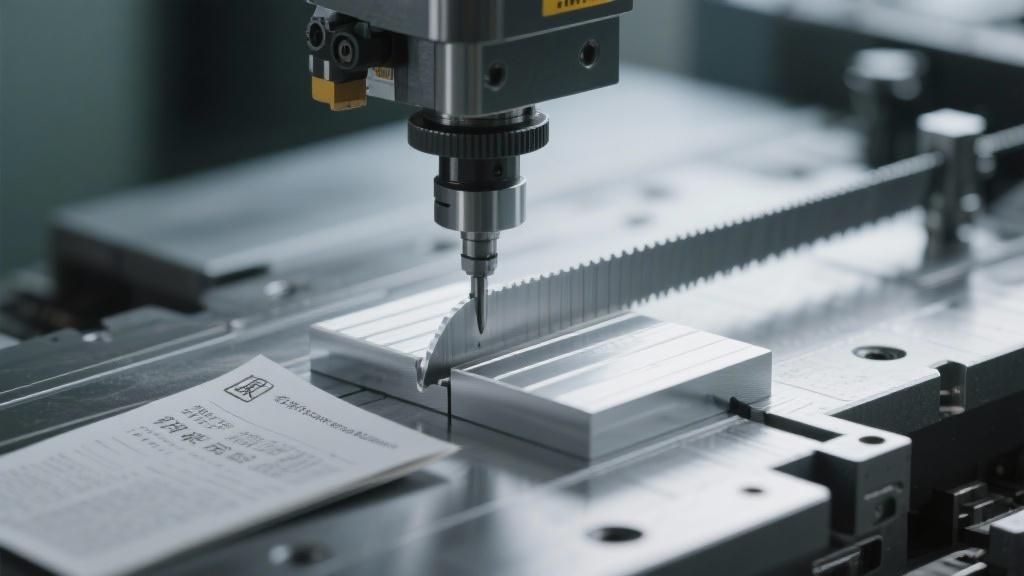Environmental factors, such as temperature and coolant application, are also critical—understanding how they interact with machining processes can lead to better thermal management and improved surface finishes. We will discuss the importance of machine tool capabilities and how they set the stage for proper parameter adjustments. Through insightful tips and best practices, this article aims to equip readers with the knowledge needed to navigate the complexities of aluminum machining effectively. Whether you are a seasoned professional or a newcomer to the field, our guidance will help you achieve precision and efficiency in your machining operations. Join us as we uncover the key elements that govern cutting parameter settings and elevate your machining performance to new heights.
### What factors affect cutting parameter settings in aluminum machining?
Question: What are the key factors that determine cutting parameter settings in aluminum machining?
Answer: When it comes to aluminum machining, several crucial factors influence how cutting parameters are set for optimal results. First and foremost, the material properties of the aluminum alloy being machined play a significant role. Different alloys possess varying hardness, tensile strength, and thermal conductivity, which directly impact the choice of cutting speed, feed rate, and depth of cut. For instance, a softer alloy may allow for higher cutting speeds, while harder alloys may necessitate slower speeds to avoid tool wear and achieve a better finish.
Another critical aspect is the tool geometry and material. The shape of the cutting tool, including its rake angle, cutting edge radius, and coating, can greatly affect the machining performance. A correctly designed tool can efficiently cut through aluminum, leading to finer finishes and prolonged tool life. For example, tools with coatings like titanium nitride (TiN) can reduce friction, allowing for higher speeds and better surface quality.
Environmental factors, such as temperature and humidity in the machining area, can also have an impact. Elevated temperatures can alter the properties of both the tool and the workpiece, potentially leading to thermal expansion and unwanted effects. Therefore, proper temperature control and the use of coolants are essential in maintaining a stable machining environment.
Lastly, machine capabilities are not to be overlooked. Different machines have varied power output and rigidity, which can dictate the range of cutting parameters you can practically employ. If the machine lacks the stability to handle aggressive cuts, even the best parameter settings can yield poor results.
How do operator skills affect cutting parameters?
Question: How does the skill level of the operator influence cutting parameter settings?
Answer: The operator’s skills and experience can significantly influence cutting parameter settings. A skilled operator understands the nuances of both the machinery and the materials involved. For example, they can make quick adjustments to feed rates or cutting speeds based on real-time observations during the machining process. This adaptability is crucial, especially when unexpected challenges arise, such as tool wear or changes in workpiece characteristics.
Moreover, experienced operators tend to have a better grasp of optimal setups, often exceeding the manufacturer’s recommended settings. They can balance efficiency with quality, ensuring that while production rates are high, the integrity of the part is not compromised. In contrast, a less experienced operator may adhere too strictly to guidelines and miss opportunities to optimize the machining process.
Operators also play a vital role in the maintenance of tools and machines. Regular inspections and timely maintenance can prevent problems that interfere with machining quality, making operator skills a critical factor in achieving successful outcomes in aluminum machining.
How does the choice of coolant affect machining parameters?
Question: What role does coolant selection play in setting cutting parameters?
Answer: The choice of coolant has a profound impact on the efficiency of the machining process and directly influences cutting parameters. Coolants are essential for reducing the heat generated during machining, which can significantly affect both the tool life and the surface finish of the workpiece.
Using the right coolant can allow for higher cutting speeds and feeds because it helps dissipate heat and lubricate the cutting zone. For instance, synthetic coolants may provide better lubrication properties than water-based solutions, enabling higher speeds without compromising the tool.
On the flip side, improper coolant use can lead to issues such as thermal distortion of the workpiece or premature tool failure. Coolants that do not adequately cool the cutting area can result in excessive tool wear, leading to the need for more conservative cutting parameter settings.
In summary, the interplay between coolant type, temperature management, and cutting parameters is vital in aluminum machining. Operators need to carefully consider their coolant choices to optimize performance, ensuring that both process efficiency and part quality are maintained.
What advanced technologies impact cutting parameters?
Question: How are advanced technologies influencing cutting parameter settings in aluminum machining?
Answer: Advanced technologies like computer numerical control (CNC) machines and real-time monitoring systems are revolutionizing how cutting parameters are set in aluminum machining. CNC technology allows for highly precise control over machining processes, enabling operators to implement complex geometries and intricate designs with high repeatability.
Furthermore, real-time monitoring systems can provide feedback on the machining process, allowing for immediate adjustments to cutting parameters based on live data such as temperature, vibration, and sound. For instance, if a monitor detects excessive vibration, it can prompt the operator to reduce the feed rate or change the tool, thereby preventing potential tool breakage or workpiece damage.
Additionally, advanced simulation software can model machining processes before actual production begins. These simulations allow for the optimization of cutting parameters by predicting tool performance and potential issues, leading to more efficient setups and reduced trial-and-error in real machining environments.

Incorporating these technologies not only improves productivity but also enhances the quality of machined components by optimizing cutting parameters based on a wealth of data and analytic insights.
Conclusion
In aluminum machining, cutting parameter settings are influenced by an intricate interplay of material properties, tool characteristics, operator skills, coolant selection, and advanced machining technologies. Understanding and optimizing these factors leads to greater efficiency, improved product quality, and enhanced operator satisfaction.
How do operator skills affect cutting parameters?
The skill level of an operator can significantly influence cutting parameter settings. Experienced operators often know how to adjust speeds and feeds in real-time based on the material’s response during machining.
They can also recognize when to make quick adjustments to avoid tool wear and ensure quality finishes, whereas less experienced operators might stick too rigidly to manufacturer guidelines, missing optimization opportunities.
How does the choice of coolant affect machining parameters?
The type of coolant used in aluminum machining plays a crucial role in determining cutting parameters. The right coolant can help reduce tool temperatures and improve lubrication, allowing for faster speeds and feeds.
On the other hand, using inadequate coolant can lead to overheating and increased wear on the tools, which ultimately forces operators to use more conservative settings and sacrifice efficiency.
What advanced technologies impact cutting parameters?
Advanced technologies, such as CNC machines and real-time monitoring systems, are changing the landscape of how cutting parameters are set. With CNC technology, operators can achieve greater precision in their machining processes, enabling them to implement complex designs with ease.
Real-time monitoring systems provide valuable feedback that allows for immediate adjustments to be made to cutting parameters, ensuring optimal performance and minimizing the risk of tool failure.
How do environmental factors affect cutting parameters in machining?
Environmental factors like temperature and humidity can greatly influence cutting parameter settings in aluminum machining. High temperatures might cause the materials to expand, affecting the integrity of the parts being machined and the tools used.
Proper management of these factors ensures that the machining process remains stable, leading to better surface finishes and prolonging tool life.









